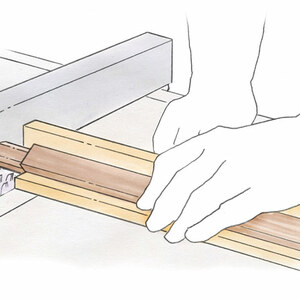Fitting a Fat Tenon
Three tips to fine-tuning the fit of a mortise-and-tenon jointA shoulder plane is the most traditional method for sizing a tenon, but it’s not the only way. In this video, Chicago furniture maker Jeff Miller demonstrates the tradtional technique and a few alternatives, which will help you achieve a perfect fit between mortise and tenon. Miller’s techniques call for an antique router plane, a rasp, or a standard bench vise.






















Comments
Thank You
“[Deleted]”
Did you listen to what Jeff said, or did you just want to be the first to criticize the idea. Why do you think there are patterns on domino floating tenons. They are also pressed into the dominos. Same idea as what the impression left by the machinist vise does in Jeff's technique.
I did listen to what Jeff said. And to answer your question, there are patterns on the dominos so Festool could press their name into their floating domino tenons and maybe you could argue too that it is to allow glue to remain in the joint. If glue adhesion is so critical then why make the joint so tight?
I liked Jeff’s initial approaches to solve his problem, the “antique” router plane, shoulder plane and rasp. Several other common woodworking tools could be used too.
I don’t have a machinist's vise in my shop nor the time to run to the machine shop next door.
Log in or create an account to post a comment.
Sign up Log in